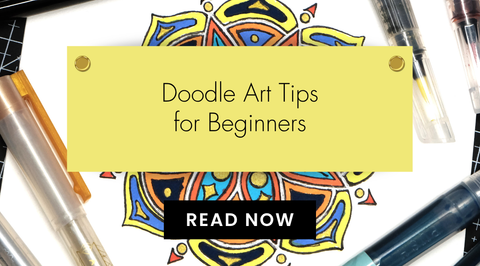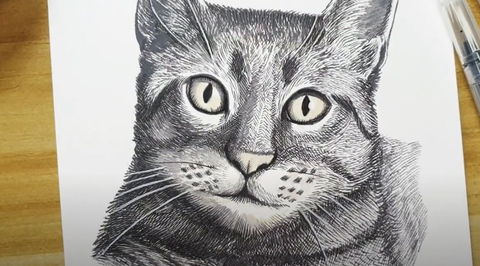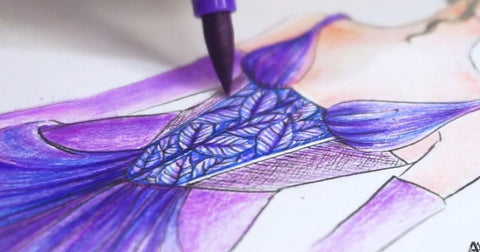A Creative Guide to the Different Art Movements
Last Updated: July 29, 2024
“Nothing in art should seem accidental, not even movement.” - Edgar Degas
Art is a reflection of human creativity and imagination, and throughout history, various art movements have emerged, each leaving an indelible mark on the art world. From the revolutionary brushstrokes of impressionism to the emotionally charged expressions of expressionism and the dreamlike visions of surrealism, the world of modern art has been shaped and enriched by these diverse movements.

In this creative guide, we will explore the essence of these art movements and their unique characteristics.
Understanding Art Movements
Art movements are collective tendencies or styles in art that share common characteristics, themes, techniques, and philosophies. They often emerge in response to cultural, social, political, and technological changes, reflecting the ideas and values of a particular period. Art movements can encompass various forms of expression, including painting, sculpture, literature, architecture, music, dance, film, and more.
These movements typically involve groups of artists with a shared vision or purpose. They might seek to break away from established norms, challenge traditional artistic conventions, or explore new ways of expressing themselves. Art movements can be regional, national, or international in scope and span different historical periods.

The significance of art movements lies in their impact on the development and evolution of art. They often influence future generations of artists and can shape entire periods of art history. Some movements are short-lived and confined to specific locales, while others endure and have a lasting influence on art for decades or centuries.
The World's Most Notable Art Movements
Over the centuries, artists have banded together to create groundbreaking movements that have left an indelible mark on the cultural landscape. From the Renaissance to today, we will explore various art movements that have shaped how we perceive, interpret, and appreciate artistic expressions.
Renaissance
The Renaissance was a transformative and influential art movement in Italy during the late 14th century and flourished throughout the 15th and 16th centuries. The term "Renaissance" means "rebirth," this period was characterized by a renewed interest in the classical art, literature, and learning of ancient Greece and Rome.

At its core, the Renaissance celebrated human potential, emphasizing individualism, humanism, and a realistic portrayal of the visible world. Artists sought to capture the human form and emotions more accurately, employing techniques such as perspective, chiaroscuro, and foreshortening to achieve lifelike representations. They drew inspiration from classical models and ancient texts, infusing their works with themes from mythology, history, and literature alongside traditional religious subjects.
The Renaissance also marked the rise of prominent artists, such as Leonardo da Vinci, Michelangelo, and Raphael, who gained recognition for their unique talents and contributions. The movement's influence extended far beyond Italy, spreading across Europe and leaving a lasting impact on Western art and culture development. Its legacy endures through the remarkable works of art and the revolutionary ideas that continue to inspire and captivate audiences today.
Impressionism

Impressionism, born in the late 19th century, is often considered the precursor to modern art. This movement sought to capture fleeting moments of light, color, and atmosphere spontaneously and directly. Artists like Claude Monet, Pierre-Auguste Renoir, and Camille Pissarro pioneered this style, emphasizing plein-air painting (painting outdoors) and a focus on the immediate sensory experience. Brushwork was quick and visible, and vibrant colors played a crucial role in depicting the ever-changing effects of light.
Expressionism
Expressionism emerged in the early 20th century as a powerful reaction to the constraints of traditional representation. This movement sought to convey raw emotions and inner turmoil rather than objective reality. Artists like Edvard Munch and Egon Schiele used distorted forms, intense colors, and bold brushstrokes to express their feelings and subjective experiences. Expressionism often explored themes of anxiety, alienation, and the human psyche.
Surrealism

Surrealism, emerging in the early 20th century, sought to unlock the power of the subconscious mind and the world of dreams. Led by artists like Salvador Dalí, René Magritte, and Max Ernst, surrealism combined elements of surprise, unexpected juxtapositions, and fantastical imagery. The movement aimed to free the mind from the constraints of logic and reason and embraced the irrational and uncanny.
Modernism
Modernism was a groundbreaking art movement that emerged in the late 19th and early 20th centuries, fundamentally transforming the artistic landscape across various disciplines, including visual arts, literature, music, architecture, and design.
It was characterized by a profound departure from traditional artistic conventions and a strong emphasis on innovation, individualism, and a break with the past. Modernist artists sought to capture the essence of the rapidly changing modern world, influenced by urbanization, industrialization, and technological advancements.

Rejecting the realism and sentimentalism of previous eras, modernist artists embraced abstraction, symbolism, and experimentation, challenging established norms and pushing the boundaries of artistic expression. They sought to convey subjective experiences, emotions, and the complexities of the human psyche, often using fragmented narratives, non-linear structures, and distorted forms.
Throughout the movement, different art forms shared common themes and ideals, promoting a holistic approach to creativity. Key figures such as Pablo Picasso, Wassily Kandinsky, Virginia Woolf, and Igor Stravinsky, among others, pushed the boundaries of their respective fields, paving the way for future generations of artists.

Modernism's influence proved transformative and long-lasting, leaving an indelible mark on the trajectory of art and culture, setting the stage for further artistic experimentation and the emergence of subsequent movements like post-modernism.
Enjoy Art Through The Ages
As you delve into the world of these art movements, remember that creativity knows no bounds, and genuine innovation often emerges when we break free from the constraints of tradition and embrace the unknown. So, pick up your brush, palette, or any other medium you fancy, and let the artistic journey unfold, guided by the spirit of these remarkable art movements.
For more insights on art, visit The Creative Corner today!







